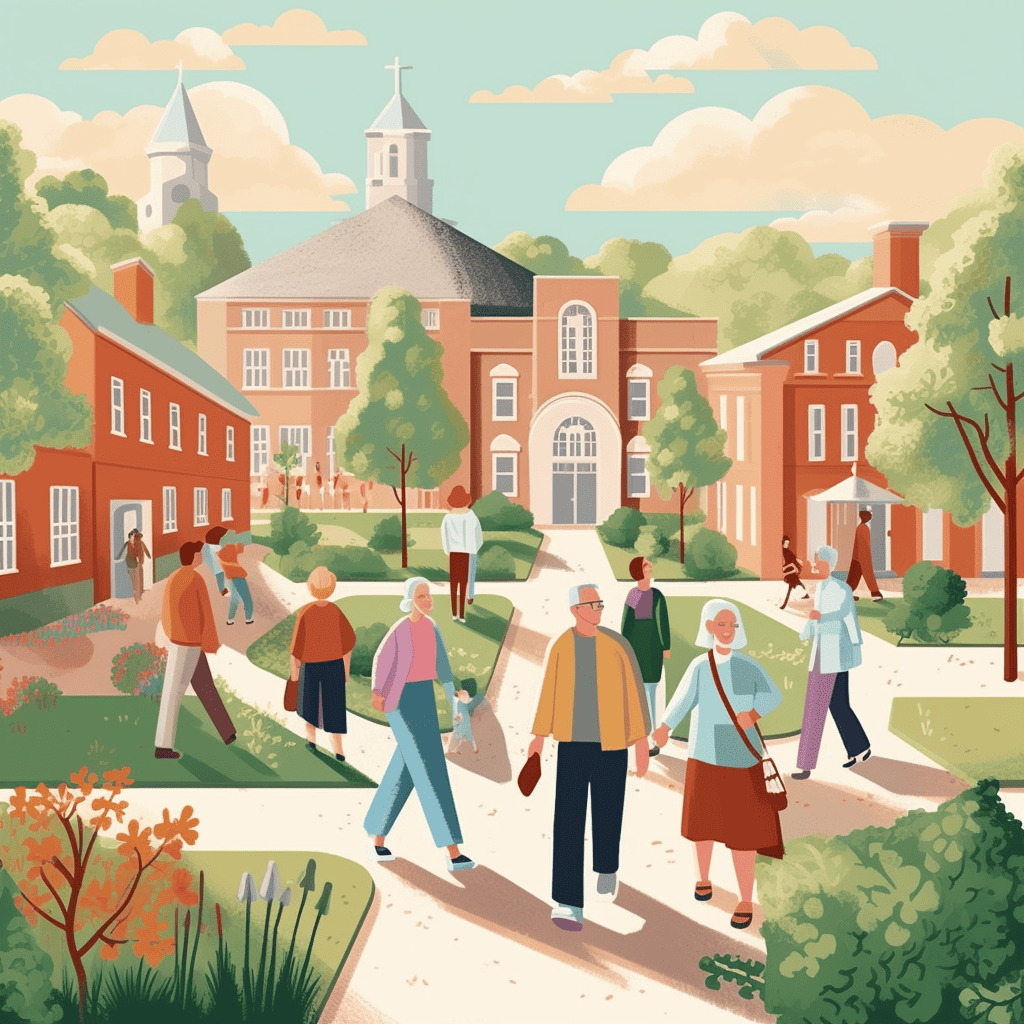How to Choose a University Retirement Community
University retirement communities offer seniors a variety of educational and recreational opportunities.
SeniorLiving.org is supported by commissions from providers listed on our site. Read our Editorial Guidelines
Find University Retirement Communities Near You
Join 1,019,247 Seniors Who've Searched for Housing Communities on SeniorLiving.org.
Or Call: (855) 241-1699Find University Retirement Communities Near You
For seniors who want to continue learning or pursue academic interests, a university retirement community offers exactly that. These retirement communities provide on-site classes, wellness programs, and art activities to help seniors stay mentally active. Some of the universities also offer onsite medical research opportunities for seniors who want to explore alternative treatments for chronic conditions or provide access to hands-on medical studies for students. To determine if retirement communities at universities are an option for you or a senior citizen in your family, check out these most commonly asked questions about university-based senior housing facilities.
What Is a University-Based Retirement Community?
A university-based retirement community is a senior living option in which seniors over 55 have primary access to advanced educational opportunities. These communities are created by universities including Duke University, Stanford University, Dartmouth College, and several other top American colleges. Seniors who live in university retirement communities do not have to be alumni to the schools in order to gain residency. However, research shows that approximately 10 percent of residents at university retirement communities are alumni of the sponsoring college where they live.
What Type of Senior Housing Is Available at University Retirement Facilities?
Most university retirement communities in the US are CCRCs, or continuing care retirement communities. In a CCRC a senior can transition to housing based on their current level of care while staying in the community. For example, a continuing care retirement community may include an independent living facility along with an assisted living unit and a nursing home. This allows the senior citizens to remain with the same medical providers and researchers during their senior years. It can be beneficial for seniors since they do not have to move out and readjust to different senior living facilities if their medical needs change.
As for the actual accommodations, housing varies to include apartments, cottages, villas, and single-family homes. In addition, as a CCRC university-based retirement communities generally have assisted living and nursing home centers within the community.
Our free housing and care finder uses your unique needs to curate a list of the best options in your area.
What Does It Cost to Live in a Retirement Community at a University?
The cost for university-based retirement communities ranges from least expensive for independent living facilities to the most expensive for CCRC.
There are two areas to look at when considering the cost of a CCRC university retirement community. First, there is the one-time entry fee, which varies greatly. For example, at The Forest at Duke at Duke University the entry fee begins at $88,000, yet at Lasell Village at Lasell College, the maximum entry fee is $900,000. The Longhorn Village at the University of Texas in Austin charges an entry fee of up to $1.18 million. Entry fees vary based on geographical locations, services offered, amenities, the degree of luxury, and local demand for senior housing. In addition, the senior is responsible for paying a monthly service fee. At the Holy Cross Village of Notre Dame this starts at $2,100 a month, while Kendal at Dartmouth College charges up to $6,400 a month.
For universities that offer independent living for seniors, the costs include leasing a home or renting an apartment, sans an entry fee or monthly service charge. For instance, at Rivers Run at the Rochester Institute of Technology seniors pay $249,000 or more for a cottage, or rent an apartment for at least $2,350 a month.
SeniorLiving.org Is Now Livestreaming
We are hosting live Q&As with senior care and housing experts on our YouTube channel. Check out one of our latest streams below and tune in to upcoming streams @SeniorLiving.Org on YouTube!

What Can a Senior Citizen Expect When Living in a University-Based Retirement Community?
The main focus of a university retirement community is to provide seniors with the ability to continue learning. As such, these communities are hosted by universities that provide seniors with various outlets for education including access to campus libraries. For example, at some universities, seniors living in these retirement communities are allowed to attend courses on campus, typically by auditing the course.
Auditing courses mean that the student doesn't have to pay to attend classes, but they do not take exams or receive college credit either. Seniors generally have access to extracurricular and recreational activities, such as theatrical performances, art exhibits, and sporting events on campus.
In addition to providing seniors with chances to take onsite courses and continuing education classes, these universities often promote medical research. Such research is offered by colleges with onsite medical centers and laboratories, such as the Dartmouth-Hitchcock Medical Center. Residents of these university communities are given discounted access to onsite medical care while providing students with hands-on training opportunities.
What Are Some of the Best University Retirement Communities?
While university retirement communities are a new concept, having been established as recently as 2009, there are at least 100 of these communities for seniors nationwide. Several of the best universities offer these communities. Here are some of the most popular.
For seniors who want to focus more on their learning opportunities, Lasell Village of Lasell College in Newton, Massachusetts may be more their speed. At this independent living facility for seniors, all residents are required to spend at least 450 hours learning or being active. This includes classroom instruction and recreational activity. In fact, the university retirement community has its own dean, library, and gym that is just for the residents.
Seniors who want to advance their learning without paying a dime can do so at Oak Hammock. This is a CCRC in Gainesville, Florida that is sponsored by the University of Florida. As a resident of Oak Hammock, senior citizens have a couple of options for continuing their education. They can audit courses at the university, which means not paying for college classes. Optionally, they can take courses exclusively for residents of Oak Hammock that are led by University of Florida professors, both current as well as retired.

SeniorLiving.org is supported by commissions from providers listed on our site. Read our Editorial Guidelines
Free Online Classes for Seniors
Maybe living in a university-based retirement community doesn’t fit your lifestyle or living arrangements. That’s okay! There are a variety of free online classes for seniors online. Check out our video below to see some alternative class options that you can do online from home.
FYI: Have questions about senior care or housing? We’re hosting livestreams on our YouTube @SeniorLiving.Org with experts who are ready to answer your questions and provide advice based on years of experience. Send your questions to help@seniorliving.org and we’ll answer them during our next livestream!




